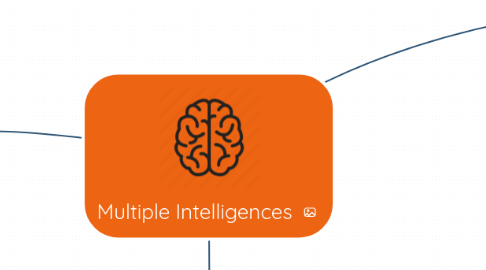
1. STYLES OF TEACHING
1.1. Teacher- centered
1.1.1. Lot of information in a short period of time
1.1.2. One-way communication
1.1.3. Whole class engagement
1.1.3.1. feedback teacher-student
1.1.4. Participation
1.1.5. Cognitives abilites and social skills development simultaneously
1.1.5.1. Eight intelligences at different times
1.2. Student-centered
1.2.1. Explanation of an understanding topic through an intelligence
1.2.1.1. Chosen by a student
1.2.1.2. full participation/ leadership
1.2.2. After a lesson or a new concept
1.2.3. Center stage by students
1.2.3.1. Scaffolding
1.2.3.1.1. Folder activities
1.2.3.1.2. Pinwheel activities
1.3. Inquiry- based Learning
1.3.1. It contains elements of
1.3.2. Known as Station activities
1.3.3. Ideal for extending and reinforcing key ideas and concepts
1.3.4. Short-term activities/ Long-term projects
1.3.4.1. Museum hosted by students
1.3.5. Working independtly or small groups
1.3.6. Common learning objective
1.3.6.1. depending on each assignment
1.3.7. Activities are open-ended
1.3.7.1. extension projects
1.3.7.2. learning centres
1.3.7.2.1. to extend students learning or as a bonus activities
2. TYPES OF MULTIPLE INTELLIGENCES
2.1. Mathematical- logical
2.1.1. Tactics of problem solving
2.1.1.1. find
2.1.1.2. separate
2.1.1.3. propose a possible solution
2.1.1.3.1. work
2.1.1.3.2. describe
2.1.1.3.3. assume the opposite
2.1.1.3.4. generalize/ specialize
2.1.2. Benefits
2.1.2.1. Famility with the vobulary and structured used in a text
2.1.2.1.1. Constant rereading of the text to solve the problem
2.2. Musical-rhythmic
2.2.1. Understanding of rhythm, pitch, melody
2.2.1.1. perception
2.2.1.2. appreciation
2.2.1.3. nonverbal
2.2.2. Results
2.2.2.1. academic results
2.2.2.1.1. exposure
2.2.3. Benefits
2.2.3.1. concentration
2.2.3.2. connecting with your inner self
2.2.3.3. creativity
2.2.3.4. distraction
2.2.3.5. classroom atmosphere
2.2.3.5.1. relaxed
2.2.3.5.2. motivated
2.2.3.5.3. productive
2.3. Bodily-kinaesthetic
2.3.1. The body as self-expression
2.3.1.1. mens sana in corpore sano
2.3.2. Cultivation of the powers of the mind
2.3.3. Group dynamic activities
2.3.3.1. role-plays
2.3.3.2. project work
2.3.3.3. games
2.3.4. Language teaching
2.3.4.1. Gesture and movements
2.3.4.1.1. communication
2.3.4.1.2. intention
2.3.4.1.3. feeling
2.3.4.2. Speech- independent gestures
2.3.4.2.1. to mantain attention
2.3.4.2.2. Necessity of being taught
2.4. Interpersonal
2.4.1. Social process
2.4.1.1. understand
2.4.1.2. work cooperatively
2.4.1.3. communicate effectively
2.4.2. Goals
2.4.2.1. the development of communicative competence
2.4.2.2. Social constructivism
2.4.2.2.1. importance of interaction
2.4.2.3. Cooperative learning
2.4.2.3.1. foment positive interdependence
2.4.3. Active listening strategies
2.4.3.1. empathy
2.5. Verbal-Linguistic
2.6. Intrapersonal
2.6.1. To understand the internal aspects of the self
2.6.1.1. knowing personal capacities and limitations
2.6.1.1.1. optimize personal perfomance
2.6.2. To practise self-discipline
2.6.2.1. perception of personal emotions
2.6.2.2. to control
2.6.2.3. to motivate the self
2.6.2.4. to learn self-control
2.7. Visual-spatial
2.7.1. Non- verbal system
2.7.1.1. colour
2.7.1.2. form
2.7.1.3. shape
2.7.1.4. space
2.7.2. Results
2.7.2.1. meaningful
2.7.2.2. knowledge of the nonlinguistic world
2.7.2.3. affective reactions
2.7.3. Connection between images and words
2.7.4. Benefits
2.7.4.1. reader interest
2.7.4.2. preditor comprehesion
2.7.4.3. stimulus activities image-mind
2.7.4.4. understanding through visualizing mental images
2.8. Naturalist
2.8.1. To discriminate among numerous species of flora and fauna
2.8.2. Enjoyment of the natural world
2.8.3. Lack of developing in the classroom
2.8.4. Development of sensitivity towards the natural world
2.8.5. Activities
2.8.5.1. brainstorming asking for avoiding contamination
2.8.5.2. semantic maps relating to nature
3. NEUROSCIENCE
3.1. LEARNING - BODY
3.1.1. MOTIVATION
3.1.2. ENERGY
3.2. COGNITION
3.2.1. EMOTIONAL LIFE
3.3. BRAIN STRUCTURE
3.3.1. NEURONS
3.3.1.1. EXPERIENCE
3.3.2. CHANGES
